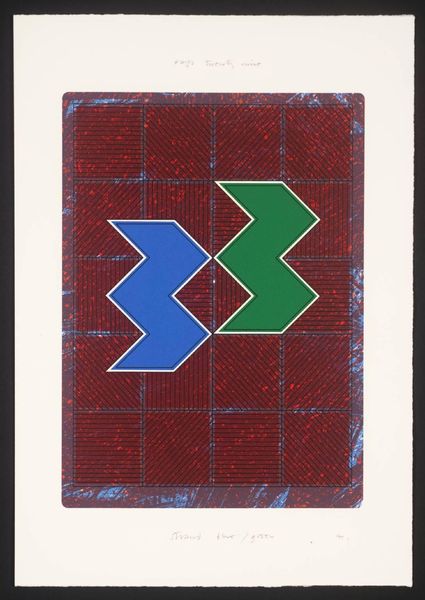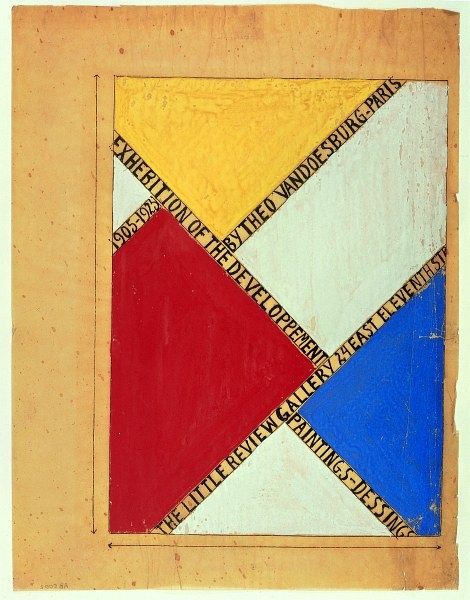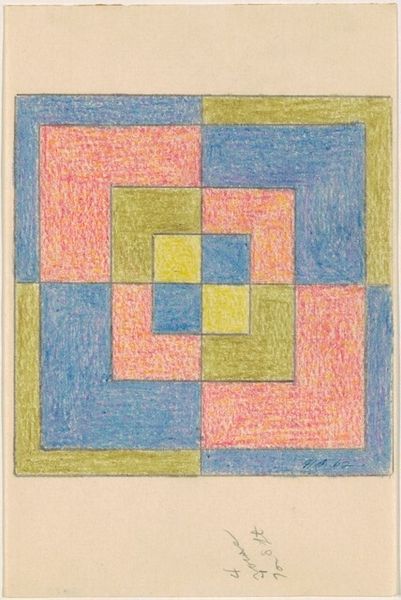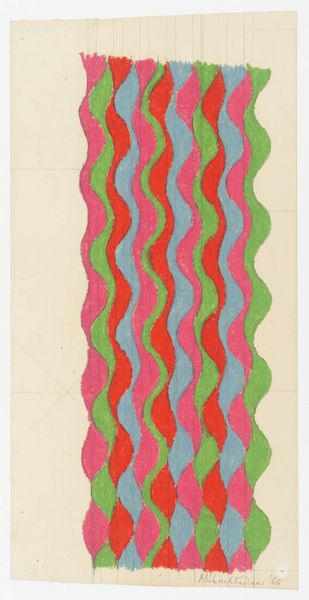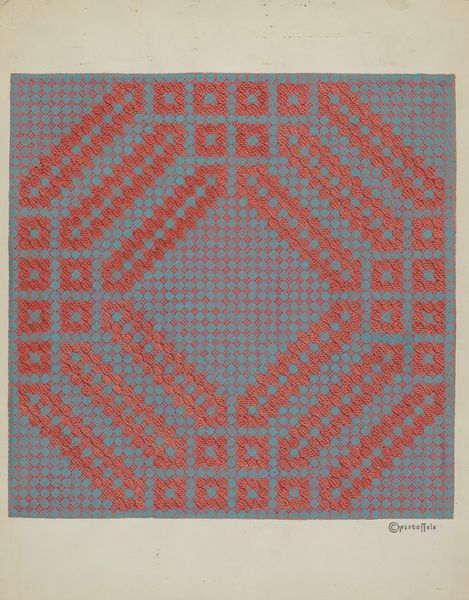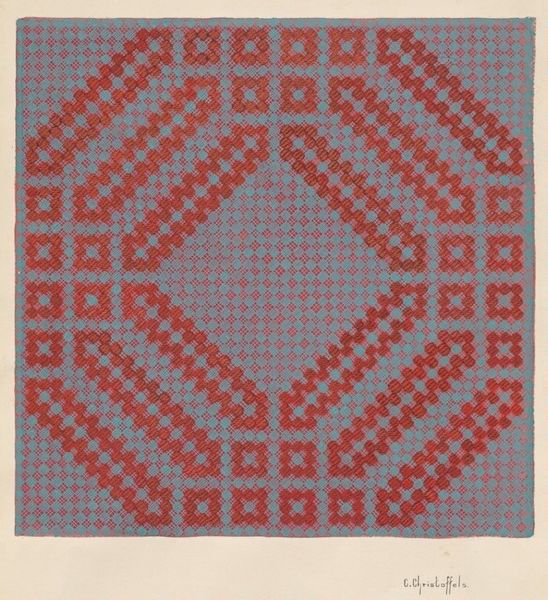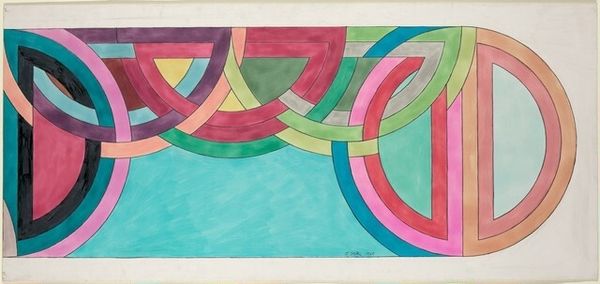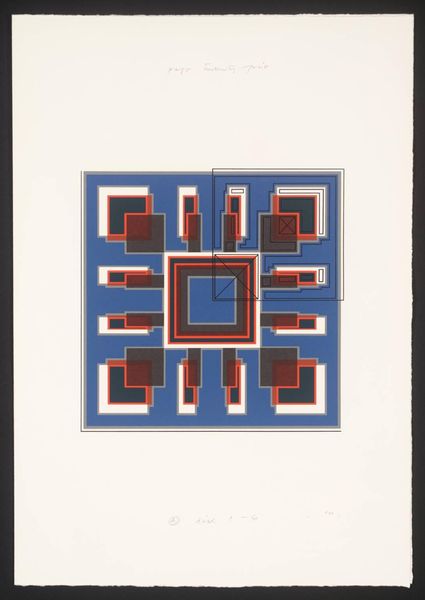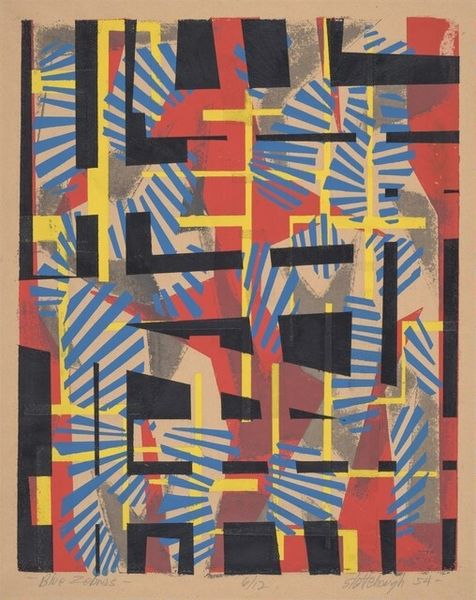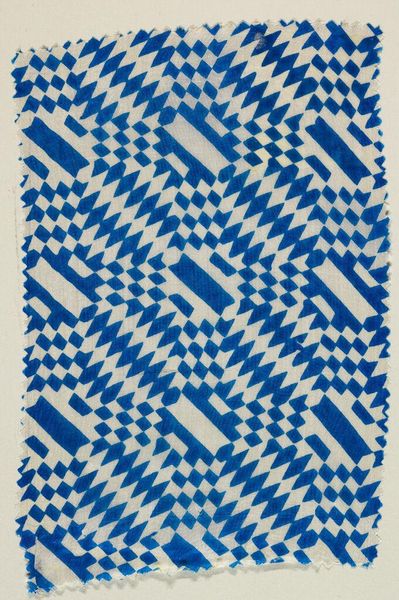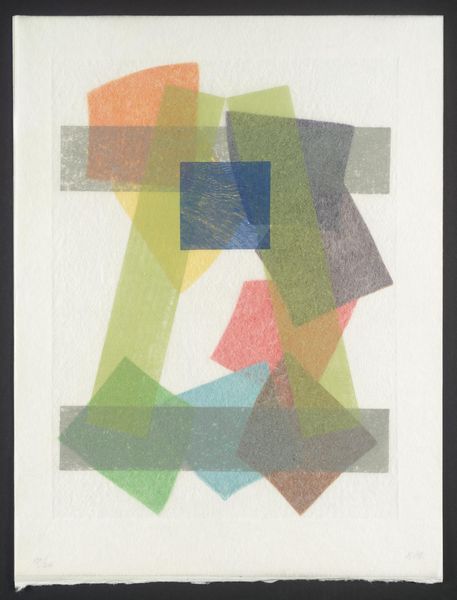
drawing, paper
#
drawing
#
paper
#
geometric
#
geometric-abstraction
#
abstraction
Copyright: Valerii Lamakh,Fair Use
Editor: This is "The Fourth 'Book of Schemes'. Album #2, the First Folder," a mixed-media painting by Valerii Lamakh from 1978. The geometric abstraction really strikes me; it’s so visually captivating with its vibrant, almost hypnotic pattern. What do you see when you look at it? Curator: This piece, to me, speaks volumes about the socio-political context in which it was created. As an artwork made in 1978, what statements might this otherwise abstract artwork make during a time when rigid Socialist Realism dominated the art scene of the Ukrainian Soviet Socialist Republic? Do you see it potentially representing a subtle form of rebellion or a yearning for individual expression beyond the officially sanctioned style? Editor: I hadn't considered the political undertones. So, you're saying the act of creating this kind of geometric abstraction itself was a statement? Curator: Precisely. It’s not just about the visual appeal; it’s about the artist's defiance against the prescribed artistic norms. The rigid structure of the repeating patterns can also be interpreted as a commentary on the restrictive nature of Soviet society, don't you think? And where would it have been shown? What was the public role of artwork like this at the time? Editor: It’s fascinating to think about art as a form of silent protest, a subversive act through geometry and colour. The repetition, now that you mention it, feels less decorative and more…deliberate. It feels like a coded message. Curator: Absolutely. Lamakh’s "Book of Schemes" wasn’t just about aesthetics. It was about challenging the boundaries of artistic freedom and engaging with a visual language that circumvented censorship. Editor: I see it completely differently now. I initially perceived just a visually appealing composition, but you've helped me see its depth and context within the broader political and cultural landscape. Thanks! Curator: It's about understanding art's public role and its dialogue with society. Examining art through this lens really makes history come alive!
Comments
No comments
Be the first to comment and join the conversation on the ultimate creative platform.
